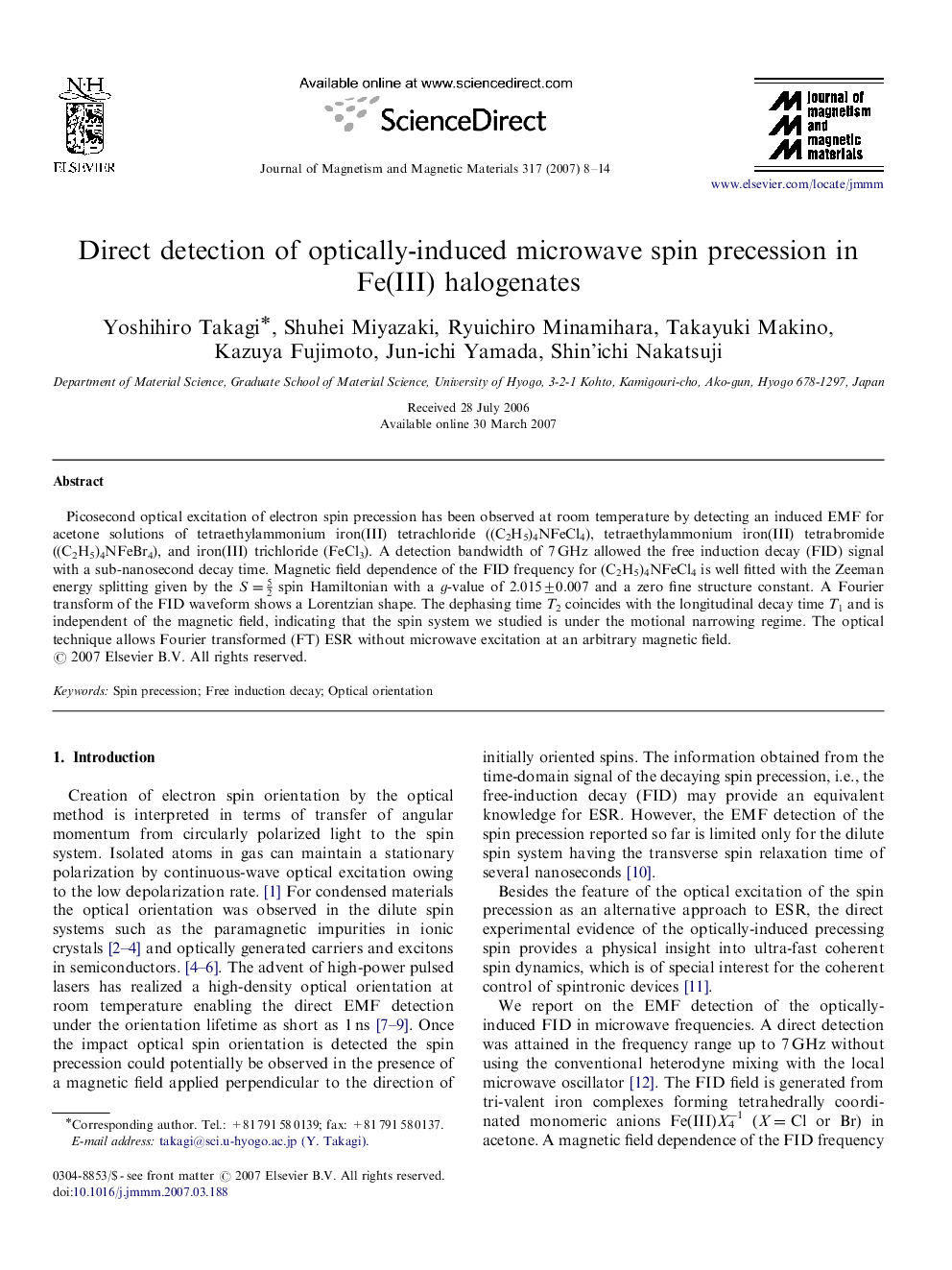| Article ID | Journal | Published Year | Pages | File Type |
|---|---|---|---|---|
| 1803812 | Journal of Magnetism and Magnetic Materials | 2007 | 7 Pages |
Picosecond optical excitation of electron spin precession has been observed at room temperature by detecting an induced EMF for acetone solutions of tetraethylammonium iron(III) tetrachloride ((C2H5)4NFeCl4), tetraethylammonium iron(III) tetrabromide ((C2H5)4NFeBr4), and iron(III) trichloride (FeCl3). A detection bandwidth of 7 GHz allowed the free induction decay (FID) signal with a sub-nanosecond decay time. Magnetic field dependence of the FID frequency for (C2H5)4NFeCl4 is well fitted with the Zeeman energy splitting given by the S =52 spin Hamiltonian with a g-value of 2.015±0.007 and a zero fine structure constant. A Fourier transform of the FID waveform shows a Lorentzian shape. The dephasing time T2 coincides with the longitudinal decay time T1 and is independent of the magnetic field, indicating that the spin system we studied is under the motional narrowing regime. The optical technique allows Fourier transformed (FT) ESR without microwave excitation at an arbitrary magnetic field.
